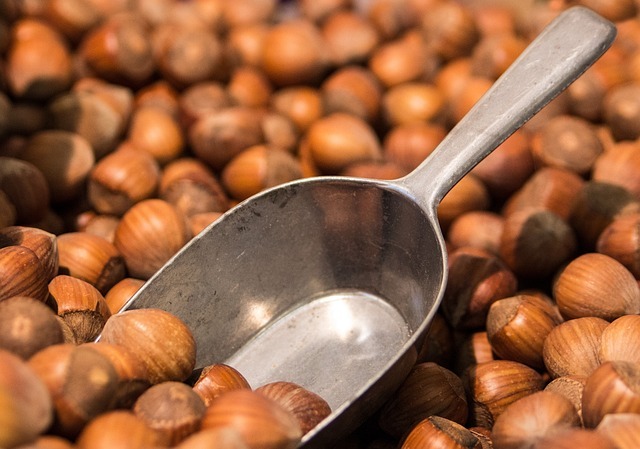Are you tired of the same old flavors in your meals? Looking for something that can tantalize your taste buds and add a burst of deliciousness to your dishes? Look no further than umami! This fifth basic taste, alongside sweet, sour, salty, and bitter, is known for its savory and mouthwatering qualities. Let’s delve into the world of umami and discover some delectable and nutritious recipe variations.
Umami, a Japanese term meaning “pleasant savory taste,” was first identified by a Japanese scientist back in the early 1900s. It refers to the unique taste sensation that comes from certain foods rich in glutamate, an amino acid. Think of umami as a symphony of flavors that gives depth and complexity to your culinary creations.
To start exploring umami, you can incorporate ingredients like mushrooms, soy sauce, tomatoes, and aged cheeses into your recipes. These ingredients are packed with umami goodness. For example, try adding sautéed mushrooms to your pasta or pizza for an earthy and savory twist. Or how about sprinkling some grated Parmesan cheese over roasted vegetables to enhance their flavor profile?
Another way to embrace umami is through fermented foods. Fermentation enhances the umami taste by breaking down proteins into more easily digestible forms. Consider experimenting with miso paste, a traditional Japanese ingredient made from fermented soybeans. Add a dollop to soups or use it as a marinade for meats and veggies. The result? A rich and savory umami kick!
If you’re a seafood lover, seaweed is an excellent umami-packed addition to your dishes. Incorporate dried seaweed into salads, stir-fries, or sushi rolls for a delightful oceanic umami flavor. You can also explore fish sauce, a condiment commonly used in Southeast Asian cuisines, to add depth and complexity to your marinades and dressings.

Remember, variety is the spice of life, and umami is the secret ingredient that adds that extra oomph to your dishes. Get creative, explore different flavors, and enjoy the gastronomic delights that umami has to offer!
Unlocking Umami: Unveiling the Fifth Taste Sensation in Savory Recipes
When it comes to taste, we often think of sweet, sour, salty, and bitter. But did you know there’s a fifth taste sensation that adds depth and complexity to our favorite savory dishes? It’s called umami, and unlocking its secrets can take your cooking skills to a whole new level.
So, what exactly is umami? Derived from the Japanese word meaning “deliciousness,” umami is a taste sensation that evokes a savory, meaty, or brothy flavor. Think of it as the magic ingredient that enhances the overall taste profile of a dish. Umami is caused by the presence of an amino acid called glutamate, which naturally occurs in certain foods.
To truly unlock umami, it’s essential to understand the sources that contain high levels of this flavor enhancer. One of the most famous umami-rich ingredients is the versatile and widely used MSG (monosodium glutamate). Despite the controversy surrounding MSG in the past, it is now recognized as safe for consumption by various health organizations. Other natural sources of umami include tomatoes, mushrooms, soy sauce, Parmesan cheese, seaweed, and fermented foods like miso and kimchi.
Now that you know how to identify umami-rich ingredients, incorporating them into your recipes is the next step. Imagine a hearty pasta sauce bursting with the savory flavors of tomatoes, mushrooms, and Parmesan cheese. Or how about a bowl of miso soup, brimming with umami goodness from fermented soybean paste? These dishes exemplify the power of umami to elevate your culinary creations.
Unleashing the full potential of umami requires careful balance and pairing with other tastes. For instance, combining umami-rich ingredients with a touch of sweetness can create a harmonious and well-rounded flavor profile. Similarly, using umami to balance out the acidity in a dish can enhance its overall taste and leave your taste buds craving more.
Umami Unleashed: Innovating Nutritious Dishes with Savory Flavors
Are you tired of the same old flavors in your meals? Looking to unleash a burst of taste that will leave your taste buds dancing with delight? Well, get ready to embark on a culinary adventure as we explore the world of umami – the flavor that takes dishes to a whole new level of deliciousness. In this article, we’ll delve into the wonders of umami and how it can be harnessed to create nutritious dishes filled with savory goodness.
So, what exactly is umami? Picture this: you take a bite of a perfectly cooked steak, and your mouth explodes with a rich, meaty flavor that lingers on your palate. That’s umami! It’s often described as the fifth taste, alongside sweet, sour, salty, and bitter. Umami adds depth, complexity, and a savory note to dishes, making them more satisfying and enjoyable.
Now, let’s talk about how we can unleash the power of umami in our meals. One fantastic way is by incorporating umami-rich ingredients into our recipes. Think mushrooms, soy sauce, tomatoes, Parmesan cheese, and miso paste. These ingredients are packed with glutamate, which is responsible for that irresistible umami taste. By adding them to your dishes, you can elevate their flavor profiles and make them truly unforgettable.
But umami isn’t just about taste; it’s also about nutrition. Many umami-rich ingredients are loaded with essential nutrients. For instance, mushrooms are a great source of vitamins, minerals, and antioxidants. Soy sauce contains amino acids that promote good health. Tomatoes are packed with lycopene, a powerful antioxidant. By using these ingredients, you not only enhance the taste but also boost the nutritional value of your meals.
Imagine a hearty mushroom risotto with its earthy flavors and creamy textures. Or a mouthwatering tomato and Parmesan bruschetta that bursts with umami goodness. These dishes not only satisfy your taste buds but also provide you with a dose of essential nutrients. Umami is truly the secret weapon for creating nutritious, flavorful meals that will leave you craving for more.
Umami unlocks a world of culinary possibilities. By infusing your dishes with umami-rich ingredients, you can take your cooking to a whole new level. Whether you’re a seasoned chef or an aspiring home cook, experimenting with umami flavors is sure to captivate your taste buds and impress your guests. So, get ready to unleash the power of umami and embark on a delectable journey of savory delights!
From Miso to Mushroom: Unveiling Umami-Rich Ingredients in Modern Cuisine
Have you ever wondered what makes certain dishes so irresistibly savory and flavorful? The secret lies in the umami taste, often referred to as the “fifth taste.” In modern cuisine, chefs have been harnessing the power of umami-rich ingredients to create delectable and memorable dishes. From miso to mushrooms, let’s explore some of these umami-packed culinary gems.
Miso, a traditional Japanese ingredient, is a fermented paste made from soybeans and grains like rice or barley. It boasts a deep umami flavor that adds complexity to soups, marinades, and dressings. With its unique combination of salty, earthy, and slightly sweet notes, miso truly elevates any dish it graces. Whether used as a base for miso soup or as a glaze for grilled meats, miso brings that wow factor to the table.
Moving on to mushrooms, these fungi marvels are nature’s umami bombs. Varieties like shiitake, porcini, and portobello are prized for their rich, meaty flavors. They can be sautéed, roasted, or even incorporated into vegetarian dishes as a substitute for meat. When cooked correctly, mushrooms develop a caramelized exterior while retaining their juicy umami essence, making them a delightful addition to risottos, pasta sauces, and stir-fries.
But umami doesn’t stop at miso and mushrooms; there are more hidden treasures to discover. Anchovies, for instance, may not be everyone’s favorite fish, but they possess an intense umami flavor that can transform ordinary dishes into extraordinary ones. Just a small amount of anchovy paste or filleted anchovies can lend depth and richness to dressings, stews, and sauces.
Another umami superstar is Parmesan cheese. This aged Italian cheese has a distinct salty and nutty flavor that enhances the taste of countless dishes. Grated Parmesan sprinkled over pasta, salads, or roasted vegetables adds a delightful umami punch, taking these dishes to new heights of deliciousness.
In summary, umami-rich ingredients such as miso, mushrooms, anchovies, and Parmesan cheese are revolutionizing modern cuisine. Their ability to impart mouthwatering flavors and tantalize our taste buds is truly remarkable. So the next time you’re in the kitchen, don’t forget to explore the wonders of umami and unleash a world of incredible flavors in your cooking.
The Umami Revolution: How Chefs are Elevating Savory Flavors in Recipe Variations
Have you ever bitten into a dish that instantly made your taste buds dance with delight? That explosion of savory goodness that leaves you craving another bite? Well, my friend, you have experienced the magic of umami. And let me tell you, chefs around the world are taking this flavor sensation to new heights, creating remarkable recipe variations that will leave you amazed.
But what exactly is umami? It’s often referred to as the fifth taste, alongside sweet, sour, salty, and bitter. Umami is derived from the Japanese word meaning “deliciousness,” and it’s all about that rich, savory, and mouthwatering flavor that can take a dish from good to extraordinary.
So how are chefs harnessing the power of umami to create these mind-blowing recipe variations? They are exploring a myriad of ingredients and techniques to unlock the full potential of savory flavors. From slow-cooking to fermentation, they are pushing boundaries and transforming ordinary dishes into extraordinary culinary masterpieces.
One technique that’s gaining popularity is the use of miso paste. Made from fermented soybeans, miso adds a deep, complex umami flavor to soups, marinades, and dressings. Its unique taste can elevate even the simplest of recipes, giving them an unexpected depth that will have you coming back for more.
Another secret weapon in the umami arsenal is mushrooms. These little wonders are packed with umami goodness, and chefs are using them in creative ways to enhance their dishes. Whether it’s sautéed shiitake mushrooms adding a meaty texture to vegetarian dishes or earthy porcini mushrooms infusing risottos with a luxurious umami punch, mushrooms are a game-changer in the culinary world.
Chefs are also turning to ingredients like anchovies, Parmesan cheese, and soy sauce to amplify the umami factor. These umami-rich ingredients are like flavor powerhouses, adding depth and complexity to a wide range of dishes. Just a touch of anchovy paste can transform a pasta sauce into a symphony of flavors, while a sprinkle of Parmesan cheese can take a salad from ordinary to extraordinary.
